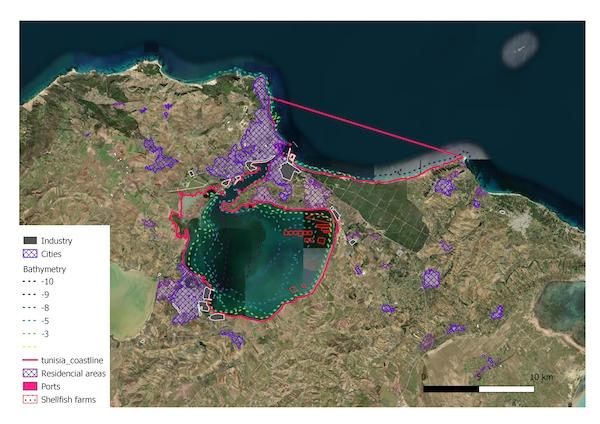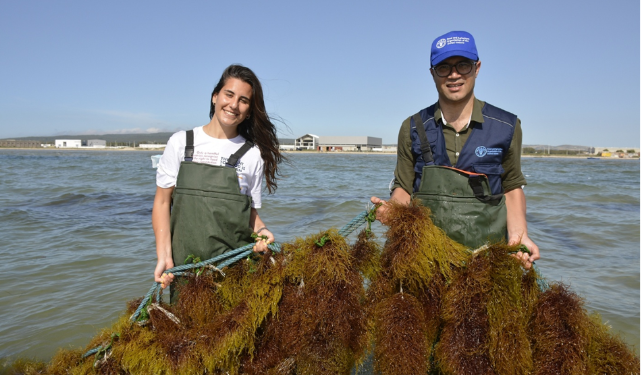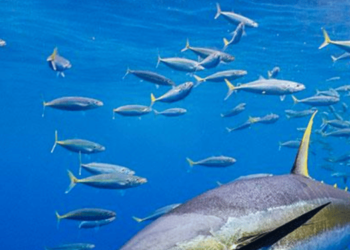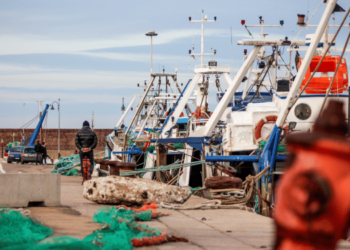FAO’s Multifaceted Efforts to Revive the Bizerte Lagoon’s Ecosystem and Community for a Sustainable Blue Transition – Nestled along the northern coast of Tunisia, the Bizerte Lagoon is a true gem of the Mediterranean, a vibrant and biodiverse ecosystem teeming with marine life and rich cultural heritage. However, this picturesque wetland has faced many challenges in recent years, threatening the delicate balance of its fragile environment.
Over the decades, rapid urbanization, industrialization, and the looming impacts of climate change have increased the pressure on the lagoon’s ecosystem. Pollution from urban, industrial, and agricultural sources has taken a toll, while unsustainable fishing practices have disrupted the natural balance of marine life.
This elliptical wetland connects to the Mediterranean Sea in the northeast via a natural 7-km inlet and a 15-km man-made canal. To the southwest, it links to the internationally significant Ramsar wetland and UNESCO-MAB reserve, Lake Ichkeul, via Oued Tinja. Its rich and diverse ecosystem thrives thanks to a mix of freshwater and marine water from various sources, including direct rainfall and runoff from streams. Its water dynamics change over time, with an average volume of 910 Mm3 and a daily exchange volume of about 22 Mm3.

The biodiversity of the Bizerte Lagoon has evolved, with 75 species of planktonic microflora and benthic macroflora providing limited plant cover along the banks and in shallow areas. The benthic macrofauna, comprises 156 species of invertebrates, and approximately 45 species of vertebrates, including many important commercial fish, However, the abundance of non-indigenous species, now numbering 29, serves as a stark reminder of the effects of climate change on this delicate ecosystem.
The impacts of climate change are already evident in the region, with changes in weather patterns, including variations in temperature and rainfall, and an accelerated rise in sea levels. These changes affect the entire ecosystem, leading to lagoon, lakes, biodiversity, and ground and surface water imbalances. The Bizerte Lagoon complex is especially vulnerable, facing salinization, rising water levels, increased water temperatures, and an influx of marine water into the adjacent Ichkeul wetland.
The consequences of these environmental challenges have been felt most acutely by the local communities whose livelihoods depend on the lagoon.
The fisheries sector in Tunisia plays a crucial role in providing employment and meeting the nutritional needs of its population. With over 100,000 individuals employed in this sector, fisheries contribute significantly to the country’s economy. Despite their importance, the productivity of coastal lagoons has faced some challenges over the years, impacting the country’s ability to meet the growing demand for protein. These lagoons now produce around 450 tonnes annually, reflecting a shift in lagoon fishery production levels.
The Bizerte Lagoon, spanning approximately 12 800 ha with a mean depth of 4.06 m, has been particularly affected. Until the 1980s, untreated urban wastewater led to a decrease in production from 1,000 tonnes per year to around 200 tonnes per year. This decline highlighted the need for action to improve water quality and restore the ecological balance of the Bizerte Lagoon’s aquatic ecosystem.
Capture fishery production from the Bizerte Lagoon also saw a reduction between 1995 and 2009, from 203 198 kg to 7 617 kg. By 2010, production was at 76.2 tonnes. These trends emphasize the importance of implementing effective fisheries management measures to support fish population recovery and ensure the sustainable productivity of the lagoon.
However, there is hope on the horizon. Efforts to address pollution, manage fishing practices, and protect critical habitats are underway, presenting a pathway towards the sustainable development of the Bizerte Lagoon.
FAO’s Crucial Role in Revitalizing the Bizerte Lagoon
FAO’s initiatives in the Bizerte Lagoon have led to significant improvements in environmental health and socio-economic development. Key results include the successful establishment of an allocated zone for aquaculture within marine spatial planning (MSP) for shellfish farming. This effort has balanced conservation goals with economic development by delineating dedicated areas for aquaculture, providing a sustainable resource management blueprint.
Recognizing the complex interactions among stakeholders, particularly fishers and shellfish farmers, FAO has effectively implemented MSP. By defining specific zones for fishing activities and allocated zones for aquaculture, conflicts between uses have been minimized, and environmental impacts have been mitigated. This approach fosters sustainable blue growth and socio-economic development, aligning with the FAO Blue Transformation Roadmap.
FAO’s focus on promoting seaweed and shellfish farming has harnessed the ecosystem services they offer, particularly in lagoon environments. These practices have significantly improved water quality and create vital nursery grounds for various species. Through different projects, FAO has developed tailored management plans and practical tools for stakeholders, encompassing a socio-economic development plan for the Bizerte Lagoon and a best practices guide for shellfish farming. By gathering and utilizing environmental, social, economic, and administrative data, these efforts assist decision-making processes. Moreover, FAO promoted seaweed aquaculture as a sustainable practice to enhance ecosystem services, climate change adaptation and employment opportunities.
To further address environmental degradation, FAO has supported initiatives such as the Integrated Depollution Programme. This programme aims to improve water quality and ecosystem health by tackling pollution from industrial, urban, and agricultural sources, laying the groundwork for sustainable socio-economic development and ecosystem restoration. Through these comprehensive efforts, FAO is playing a crucial role in revitalizing the Bizerte Lagoon and ensuring its long-term sustainability.
FAO’s Multifaceted Efforts to Revive the Bizerte Lagoon’s Ecosystem and Community for a Sustainable Blue Transition








